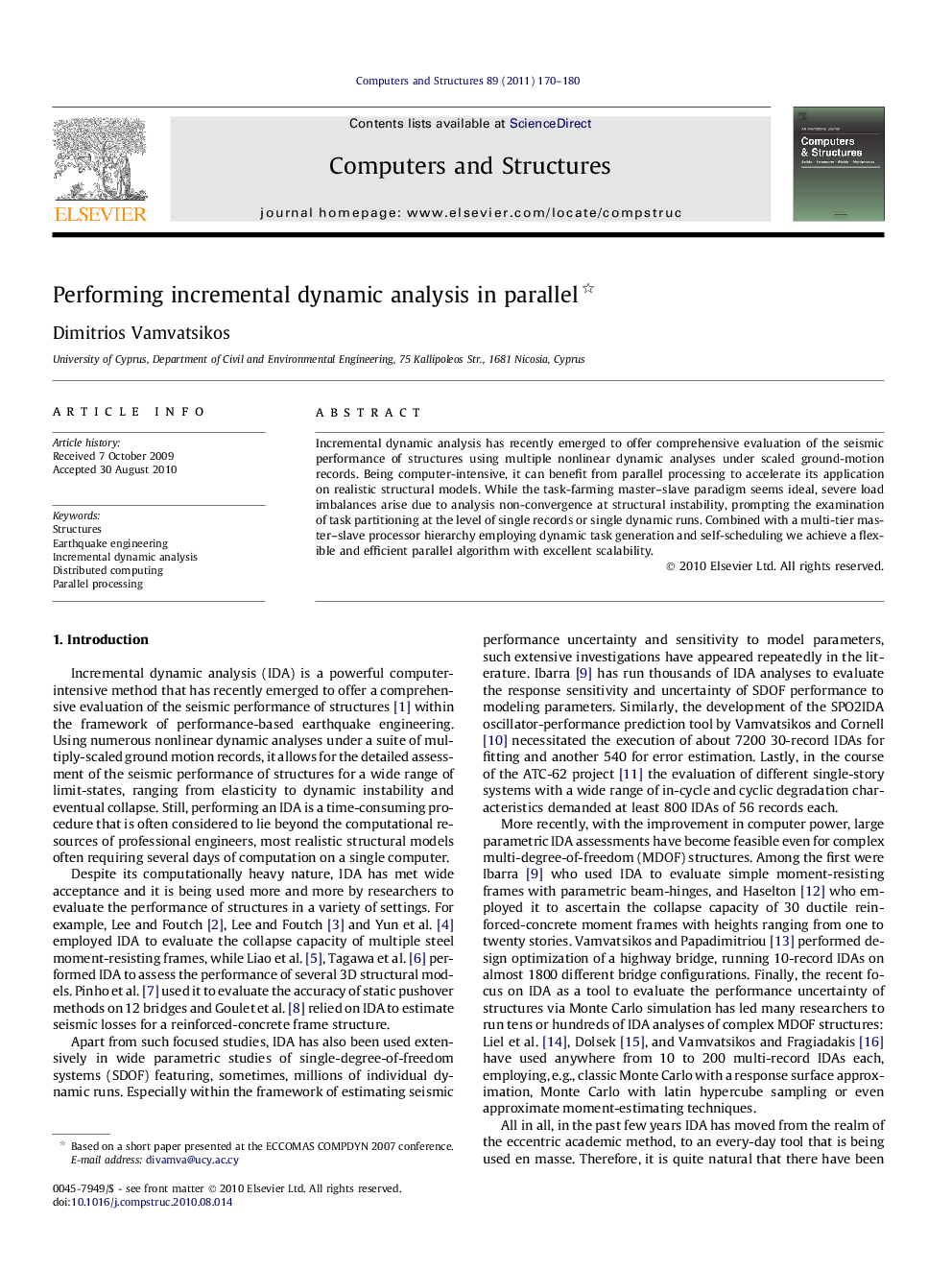| Article ID | Journal | Published Year | Pages | File Type |
|---|---|---|---|---|
| 509942 | Computers & Structures | 2011 | 11 Pages |
Incremental dynamic analysis has recently emerged to offer comprehensive evaluation of the seismic performance of structures using multiple nonlinear dynamic analyses under scaled ground-motion records. Being computer-intensive, it can benefit from parallel processing to accelerate its application on realistic structural models. While the task-farming master–slave paradigm seems ideal, severe load imbalances arise due to analysis non-convergence at structural instability, prompting the examination of task partitioning at the level of single records or single dynamic runs. Combined with a multi-tier master–slave processor hierarchy employing dynamic task generation and self-scheduling we achieve a flexible and efficient parallel algorithm with excellent scalability.
